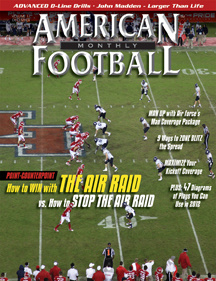Article CategoriesAFM Magazine
|
Strength Report – Density Training for the High School Athleteby: Mark HooverHead Coach and Strength and Conditioning Coach, Central Davidson High School (NC) © More from this issue Many programs can help make high school athletes stronger, more muscular and even faster. However, if your goal is to train your high school athletes to improve athleticism, flexibility, balance, strength, power and speed, density training is the way to go. Density training is a philosophy of training based on strength coach Charles Staley’s program, “Escalating Density Training”. Since the program was introduced, strength coaches all over the country have been putting together their own versions of this very progressive and outstanding form of training. I owe 100% of what I know about using density training in my program to Wake Forest’s Ethan Reeve. Ethan is one of the premier strength and conditioning coaches in the nation. Prior to meeting Ethan four years ago, I was a “Bigger, Faster, Stronger” guy. But I was fortunate e....The full article can only be seen by subscribers.
|
|
|||||||
| HOME |
MAGAZINE |
SUBSCRIBE | ONLINE COLUMNISTS | COACHING VIDEOS |
Copyright 2025, AmericanFootballMonthly.com
All Rights Reserved





